The Approved List of Models and Manufacturers (ALMM) for Wind Turbines and Wind Turbine Components is a quality assurance initiative by the Ministry of New and Renewable Energy (MNRE). It aims to promote the use of certified, reliable, and efficient wind energy systems across India, ensuring that only approved models and components are deployed in government-supported projects.
Table of Contents
- Scope of ALMM-Wind and ALMM-WTC
- Pre-Application Requirements by the Applicant
- The ALMM-Wind and ALMM-WTC Enlistment Process
- Application Submission
- Document Scrutiny
- Types of ALMM-Wind Applications: New Enlistment and Variants
- Types of Applications for ALMM (Wind)
- Types of Applications for ALMM-WTC
- Verification of Documents and Non-Conformities
- ALMM-WTC Inspection of a Manufacturing/Assembly Facility
- Report Submission and Review
- Key Annexures and Document Checklists for ALMM-Wind and ALMM-WTC
- Conclusion
This framework improves transparency and responsibility in the wind power sector. By maintaining strict standards for design, manufacturing, and certification, ALMM helps promote investor confidence, enhances operational safety, and supports India’s mission toward sustainable and self-reliant renewable energy development.
Scope of ALMM-Wind and ALMM-WTC
The Approved List of Models and Manufacturers for Wind (ALMM-Wind) and Wind Turbine Components (ALMM-WTC) has been introduced by the Ministry of New and Renewable Energy (MNRE) to regulate and ensure the quality of wind turbine systems installed across India.
This Standard Operating Procedure (SOP) applies to all manufacturers seeking enlistment under either ALMM-Wind or ALMM-WTC. It defines the technical, procedural, and documentation necessities mandatory for inclusion in the lists.
The Type Certificate issued by an accredited Type Certification Body (CB) acts as the foundation for enlistment, covering components like blades, towers, gearboxes, generators, and bearings. Components listed under ALMM-WTC must relate directly to the wind turbine models approved in ALMM-Wind, ensuring full traceability and certified performance.
Pre-Application Requirements by the Applicant
Before applying for enlistment in ALMM-Wind or ALMM-WTC, manufacturers must ensure adherence to crucial prerequisites that validate their technical and operational competence:
- Type Certification: The applicant must own a Full or Provisional Type Certificate with no unresolved safety issues.
- ISO Certification: Proof of compliance with relevant ISO certification for manufacturing and quality management must be submitted.
- Technical Documentation: All relevant documents issued by the qualified Certification Body, including design details, performance data, and quality assurance reports, must be submitted.
These preconditions form the backbone of eligibility for ALMM inclusion and ensure compliance with national and international wind energy standards.
The ALMM-Wind and ALMM-WTC Enlistment Process
The enlistment process for both wind turbine models and their main components follows a transparent, multi-stage system designed to support quality, performance, and safety.
For ALMM-Wind
- Application Submission: Manufacturers submit a valid Type Certificate, conformity statements, certified power curve, and ISO documents.
- Committee Review: The ALMM-Wind Committee reviews all documents as per MNRE guidelines.
- Decision:
- Listing: If fully compliant.
- Clarifications: For minor issues that can be closed within a week.
- Rejection: For major non-compliance.
For ALMM-WTC
This process covers components such as blades, towers, gearboxes, generators, and special bearings. It includes document scrutiny, factory inspection, and final approval by the ALMM-WTC Committee after reviewing the technical team’s inspection report.
Application Submission
Applicants must formally submit their request for inclusion in ALMM-Wind or ALMM-WTC to the MNRE. The application should be complete with all required technical and administrative documents, along with a non-refundable application fee.
MNRE may also launch a dedicated online portal to simplify submissions and tracking. The date of submission and payment marks the official start of the assessment process.
Document Scrutiny
The ALMM Committees conduct a complete review of the application and documents to verify compliance and completeness.
During this stage, they:
- Verify prerequisites, including valid Type and ISO certificates.
- Check conformity with applicable standards and technical specifications.
- Decide on next steps, which could include factory inspection or requests for additional clarification.
Only compliant applications move to the inspection phase, ensuring that registered models and components meet MNRE’s defined benchmarks.
--------------Blog Contact Form-------------
Types of ALMM-Wind Applications: New Enlistment and Variants
The ALMM differentiates between a New Model and a Variant to maintain integrity and prevent duplication.
- New Enlistment: A New Wind Turbine Model features a noticeably different design or technology, for example, variations in aerodynamic design, generator technology (DFIG vs. PMSG), drive train configuration, or control strategy. Such new models are exempted from sourcing components listed under ALMM-WTC for up to 800 MW capacity or two years from enlistment.
- Variant: A Variant is a modified version of an existing model with minor changes, such as less than 2% rotor diameter or 10% rated power variation. These updates do not need separate enlistment and are considered under the existing model entry.
Types of Applications for ALMM (Wind)
There are four main application categories under ALMM-Wind:
- New Enlistment of Wind Turbine Model and Manufacturer- For first-time applicants with full Type Certificates.
- New Model by Existing Manufacturer- For manufacturers already listed but introducing a new model.
- Updation of Existing Model- For changes in technical specifications or Type Certificates.
- Updation of Revised Documents- For administrative updates like renewed ISO certificates or revised technical documents.
Each application type is wisely reviewed by the ALMM-Wind Committee to ensure quality consistency and transparency.
Types of Applications for ALMM-WTC
The ALMM-WTC accepts two main types of applications:
- New Enlistment of Component: For first-time inclusion of wind turbine components such as blades, gearboxes, generators, and towers.
- Updation of Component: For manufacturers already enlisted, seeking to update their component certification or manufacturing details.
The ALMM-WTC Committee assesses each submission on the basis of inspection reports, component certificates, and compliance with ISO and IEC standards.
Verification of Documents and Non-Conformities
Once documents are submitted, the ALMM-WTC Committee thoroughly reviews them for accuracy and compliance.
If any non-conformities are identified, they are officially communicated to the manufacturer. The manufacturer must then correct them and submit a closure report.
The committee performs a final review to ensure that all nonconformities are resolved before recommending the application for enlistment.
ALMM-WTC Inspection of a Manufacturing/Assembly Facility
A key part of the ALMM-WTC process is the factory inspection, which ensures that each component manufacturer maintains consistent production quality. The inspection, conducted as per ISO/IEC 17020, includes:
- Verification of factory license, ownership, and capacity
- Review of manufacturing infrastructure, tools, and testing facilities
- Assessment of quality assurance systems and ISO compliance
- Evaluation of testing capabilities, calibration, and safety practices
- Examination of after-sales service and maintenance support
An inspection fee of Rs 1.5 lakhs (plus taxes) is applicable for each component type, excluding travel and logistics.
Report Submission and Review
After inspection, the Technical Team submits a detailed report with photographic evidence to the ALMM-WTC Committee.
The committee reviews this report and makes a recommendation to MNRE for final enlistment.
If inconsistencies remain unresolved, the committee may request additional clarifications, online verification, or a re-inspection.
Applications failing to fulfill compliance standards may be rejected after due process.
Key Annexures and Document Checklists for ALMM-Wind and ALMM-WTC
Annexure-3 Format of Inspection Reports Format for Inspection Report (Nacelle and Hub):
| Sr. No. | Category | Inspection Points (Hub and Nacelle) |
|
1. |
Product Design, Development & Engineering | Evaluation of in-house design and engineering capabilities, team experience, and technical strength |
|
2. |
Project Management | Availability and competence of dedicated project management resources |
|
3. |
Inward & Raw Material Inspection | Inspection of incoming mechanical, electrical, electronics, and composite materials; verification of associated documents |
| Generation of GRN and documentation updates in ERP | ||
|
4. |
Material Storage and Handling | Covered and organized storage for incoming and prepared materials |
| Adequacy of material handling equipment and logistics flow | ||
|
5. |
Calibration Facility | In-house calibration of gauges, instruments, and test equipment |
|
6. |
General Facility | Minimum one dedicated assembly line each for nacelle, hub, and drivetrain |
| Adequate layout for materials, logistics, assembly, and support services | ||
| Defined movement paths and gate sizes for the hub and nacelle | ||
| Specialized zones for QC, maintenance, and sample storage | ||
| Walkways, platforms, and clearances per safety and process requirements | ||
| Access to the yard with a suitable turning radius for large assemblies | ||
| Availability of EOT cranes, forklifts with safe operational height | ||
| Controlled environment for critical assembly processes (e.g. bearings) | ||
| Defined areas for packing and pre-dispatch inspection | ||
|
7. |
Utilities | Availability of electrical connections (230V / 400V), power backup, and adequate installed capacity |
| Internet and network infrastructure: ≥1 GB connectivity, Wi-Fi 6, LAN, ≥100 Mbps | ||
| UPS and generator backup for critical operations | ||
| Adequate lighting levels in all operational zones | ||
|
8. |
In-Process Inspection | Inspection per approved In-process QAP |
| Monitoring of key process and product parameters | ||
| Workforce competency, training records, and skill matrix | ||
| ERP-based result recording and traceability | ||
| Non-conformance handling and production order release process | ||
|
9. |
Final Testing and Inspection | Nacelle and hub simulation and functional testing |
| Visual inspection, pre-dispatch inspection per checklist | ||
| Packing, dispatch, and preparation of history cards | ||
| Final product release and document archival | ||
|
10. |
In-house Testing Capability | Availability of test setups for nacelle, hub, and free run tests |
| Test panel with AC drive and data recording | ||
|
11. |
Calibration Management | Calibration via external NABL-accredited labs |
| Scheduling, SAP-based order release, and record tracking | ||
| IMTE tagging and master list management | ||
|
12. |
Finished Goods Storage | Sufficient yard space for storage of completed nacelle assemblies |
|
13. |
Power Supply and Backup | Installed capacity (e.g. 500 kVA) and DG backup arrangements (e.g. 350 kVA) |
|
14. |
Service & Aftermarket Support | Field service capabilities and shop-level repair facilities |
|
15. |
Management Systems | Certifications: ISO 9001, safety, environment, HR compliance |
| Supplier management and ESG (Environmental, Social, Governance) systems | ||
| Customer satisfaction systems and third-party audit certifications |
Format for Inspection Report (Rotor Blade)
| Sr. No. | Category | Inspection Points (Rotor Blade) |
| 1. | Product Design, Development & Engineering | Capability, Experience, and Strength of In-house Team |
| 2. | Process Design, Development & Engineering | Capability, Experience, and Strength of In-house Team |
| 3. | Project Management | Dedicated Project Management Team |
| 4. | Incoming Material Inspection & Testing | Dimension Checks |
| Material Certifications Review (if applicable) | ||
| Coatings and Substances Verification | ||
| 5. | Raw Materials Storage and Handling | Designated Material Storage Area with Environmental Control Facility |
| Safety Stock Management for Key Materials (Glass, Carbon, Resins, etc.) | ||
| 6. | Material Testing Laboratory | Chemical and Mechanical Testing Capabilities |
| 7. | Non-Destructive Testing & Process Validation | Non-Destructive Testing (e.g., Ultrasonic, Visual) |
| Process Qualification and Validation | ||
| Personnel Qualification | ||
| 3D Geometry Inspection (Laser/Other Tech) | ||
| 8. | Calibration Facility | Calibration of Gauges, Instruments, and Testing Facilities |
| 9. | General Facility | Minimum of Two Main Mould Systems |
| Adequate Plot Layout for Material, Waste, and Logistics | ||
| Dedicated Resin Infusion and Blade Movement Pathways | ||
| Special Areas for Maintenance, Resin Mixing, and Quality Control | ||
| Platforms, Walkways, and Sufficient Turning Space for Operations | ||
| EOT Cranes in Various Facility Areas | ||
| Dust Extraction Systems for Specific Operations | ||
| 10. | Utilities | Availability of Electrical Power (e.g., 230V & 400V) |
| Network Connectivity (Bandwidth, Wi-Fi) | ||
| Emergency Power Backup (Generators, UPS) | ||
| Lighting Levels for Different Facility Areas | ||
| 11. | Product Testing Facility | Overload and Fatigue Testing |
| Vibration Testing and Accelerated Life Testing | ||
| 12. | Coating Facility | Designated and Controlled Coating Facility |
| 13. | Finished Goods Storage | Storage Yard for Finished Products (Capacity) |
| Preservation and Packaging Process | ||
| 14. | Service Facility | Aftermarket Support (Field Service, Repairs, etc.) |
| 15. | Management Systems | Quality System Certification (e.g., ISO 9001) |
| Safety and Environmental Certifications | ||
| Compliance with Legal, HR, and Sustainability Standards | ||
| Supplier Management and Third Party Certifications |
Format for Inspection Report (Tower)
| Sr. No. | Description | Inspection Points (Tower) |
| 1. | Process Design, Development & Engineering | Capability and Strength of the In-house Team |
| 2. | Project Management | Dedicated Project Management Team |
| 3. | Incoming Material Inspection & Testing | Dimension Verification |
| Material Certifications (if applicable) | ||
| Coating Materials Review | ||
| Welding and Blasting Consumables Review | ||
| 4. | Raw Materials Handling at Plant | Carrier Access to Areas (Cranes/Forklifts) |
| Safe Handling of Steel Plates, Flanges, etc. (Vacuum Jaws, Magnetic Lifters, etc.) | ||
| 5. | Raw Materials Handling at Plant | Covered Storage for Key Materials (Steel Plates, Flanges, Internals) |
| Controlled Environment for Welding & Coating Consumables | ||
| 6. | Material Testing Laboratory | Chemical & Mechanical Testing in Accredited Labs (e.g., NABL) |
| 7. | Calibration Facility | Calibration Services Tied with Accredited Labs |
| 8. | Non-Destructive Testing Facility | Ultrasonic Testing |
| Visual Testing | ||
| Magnetic Particle Testing | ||
| Dye Penetrant Testing | ||
| Process and Personnel Qualification | ||
| 3D Geometry & Flatness/Tiltness Inspection (Laser/Other Tools) | ||
| 9. | Pre-Blasting & Cutting | Pre-blasted & Primer-Coated Plates |
| CNC Plasma or Gas Cutting with Groove Preparation | ||
| 10. | Bending/Rolling Process for Shell Forming | CNC-Programmed Rolling Machines (Online Control) |
| Material Thickness and Width Specifications (e.g., ≥50mm thickness, ≥3000mm width) | ||
| 11. | Fabrication Operations | Long Seam Fit-Up (Rollers/Supports) |
| Flange Fit-Up (CNC-controlled Stations) | ||
| Circular Seam Fit-Up (Multiple Welding Lines with Hydraulic Fit-Up Rollers) | ||
| Automated Door & Duct Hole Cutting | ||
| Automated Door Frame Welding with Full Penetration Capability | ||
| 12. | Welding Operations | Robotic or Automated Power Arc/Pulsed Arc Welding Technologies |
| Tack Welding (GMAW) with FullLength Welds as per Approved Procedures (WPS | ||
| 13. | Welding Procedure Qualification (WPS) | Qualified WPS through Performance Qualification (PQR) Witnessed by Third Party |
| 14. | Blasting Facility | Automated Blasting with Environment & Process Controls |
| Automated Blast Rotation & CNC/NC Process Control | ||
| In-Process Control for Surface Profile, Finish, and Environment | ||
| 15. | Painting at Plant | Automated Painting Facility with Environment Control & Valid Certifications |
| Rotational/Fixture Control with CNC/NC Fixtures | ||
| Paint Mixing Process Control with Automated Systems | ||
| 16. | Internals Manufacture, Assembly & Welding | Well-Equipped Internals Manufacturing, Assembly & Welding Facilities |
| Own Galvanizing Facility | ||
| Profile Cutting (CNC-controlled Gas/Plasma Cutting with Mechanical Cleaning) | ||
| 17. | Product Assembly | Pre-Assembly, Main Assembly, and Final Assembly |
| 18. | General Facility | Separate Manufacturing Line for Different Tower Components |
| Adequate Plant Layout for Material, Waste, and Logistics | ||
| Sufficient Tower Movement Pathways and Gate Dimensions | ||
| Availability of Bevelling and Drilling Machines | ||
| Pathways for Movement to Blasting & Painting with Sufficient Turning Space | ||
| Emergency Generators & EOT Cranes in Fabrication Area | ||
| 19. | Finished Storage Area | Safe Placement of Sections on Stands/Saddles Without Damage |
| Adequate Storage Yard for Finished Towers | ||
| Packaging & Dispatching Process | ||
| 20. | Service Facility - Aftermarket Sales & Service | Field Service Support (Repairs, Inspections, etc.) |
| Shop Repair Facility | ||
| 21. | Management Systems | Quality System Certifications (e.g., ISO 9001, ISO 3834-2, EN 1090-2) |
| Safety and Environmental Certifications | ||
| Legal, Compliance, and HR Practices | ||
| NABL Accreditation or Tie-up with Accredited Labs | ||
| Supplier Management Systems | ||
| Environmental, Social, and Governance (ESG) Practices | ||
| Customer Satisfaction & Feedback Management | ||
| Third-Party Certification Systems for Design & Manufacturing Evaluation |
Format for Inspection Report (Gearbox)
| Sr. No. | Description | Inspection Points (Gearbox) |
| 1. | Product Design, Development & Engineering | Capability, Experience, and Strength of In-house Team |
| 2. | Incoming Material Inspection & Testing | Dimension and Material Testing (e.g., hardness, tensile, etc.) |
| 3. | Gearbox Components (Gears & Castings) Machining Facility | Gear Component Production |
| In-house Casting Component Production | ||
| 4. | Heat Treatment | Carburizing Treatment |
| Nitriding Treatment | ||
| Induction Hardening | ||
| Shot Blasting | ||
| 5. | Material Testing Laboratory | Mechanical Properties Testing (e.g., tensile strength, impact resistance, etc.) |
| 6. | Metallurgical Laboratory | Metallurgical Properties Testing (e.g., microstructure, hardness) |
| 7. | Chemical Laboratory | Chemical Testing (e.g., composition, impurities) |
| 8. | Non-Destructive Testing (NDT) Facility | Ultrasonic Testing |
| Magnetic Particle Testing | ||
| Dye Penetrant Testing | ||
| Grinding Burn Inspection | ||
| 9. | In-house Gears & Casting Components Inspection & Testing | Gear Geometry and Parameter Testing |
| 3D Geometry Inspection of Components | ||
| 10. | In-house Calibration Facility | Calibration of Gauges, Instruments, and Test Facilities |
| 11. | Product Assembly | Pre-Assembly, Main Assembly, and Final Assembly |
| 12. | Product Flushing & Cleanliness | Cleanliness Measurement (e.g., particle counts, oil cleanliness) |
| 13. | Product Testing Facility | Basic Functional Load Test (e.g., load, temperature, noise, vibration) |
| Overload Test (for Prototypes) | ||
| Dynamic Test (e.g., fatigue, performance) for Prototypes | ||
| Cold Chamber Test (e.g., -40°C) for Prototypes | ||
| 14. | In-house Painting Facility | Corrosion Protection Levels (e.g., coating thickness, adhesion tests) |
| 15. | Service Facility - Aftermarket Sales & Service | Field Service Support (e.g., repairs, inspections, upgrades) |
| Shop Repair Facility | ||
| 16. | Management Systems | Quality System Certification (e.g., ISO 9001, ISO 3834-2, EN 1090-2) |
| Safety and Environmental Certifications | ||
| Legal and Compliance Systems (e.g., HR practices, regulatory adherence) | ||
| NABL Accreditation or Tie-up with Accredited Labs | ||
| Supplier Management Systems | ||
| Environmental, Social, and Governance (ESG) Practices | ||
| Customer Satisfaction Management Systems (feedback, surveys) | ||
| Third-Party Certification Systems for Design and Manufacturing Evaluation |
Format for Inspection Report (Yaw Bearing)
| Sr. No. | Description | Inspection Points (Yaw Bearing) |
| 1. | Product Design, Development & Engineering | Capability and Strength of In-house Team |
| Design Calculations & Simulations | ||
| 2. | Incoming Material Inspection & Testing | Incoming Material Inspection & Testing |
| Material Testing (e.g., hardness, mechanical properties) | ||
| Material Traceability | ||
| Inspection Infrastructure and Testing Capabilities | ||
| 3. | Gear Rim Machining Facility | Machining Capability (e.g., CNC Vertical/Horizontal Turret, CNC Drilling, Gear Cutting) |
| Material Handling Capabilities | ||
| Availability of Tooling & Fixtures | ||
| 4. | Heat Treatment | Process Qualification/Validation (e.g., CQI-9) |
| Heat Treatment Process: HH+QT, CNC Induction Hardening | ||
| Stress Relieving Process | ||
| 5. | Laboratory Accreditation | Accreditation like ISO/IEC 17025 or Equivalent |
| 6. | Accreditation like ISO/IEC 17025 or Equivalent | Mechanical Properties Testing (e.g., tensile strength, elongation) |
| Hardenability Testing | ||
| 7. | Metallurgical Laboratory | Metallurgical Properties Testing (e.g., microstructure, composition) |
| 8. | Chemical Laboratory | Chemical Composition and Analysis (e.g., for alloys and coating materials) |
| 9. | In-house Non-Destructive Testing Facility | Personal Qualification of Inspectors |
| Ultrasonic Testing | ||
| Magnetic Particle Testing | ||
| Visual Testing | ||
| Case Depth & Hardness Verification | ||
| Dye Penetrant Testing | ||
| 10. | In-house Inspection & Testing | Gear Geometry & Parameter Testing (e.g., pitch, teeth profile, backlash) |
| Linear, Circular, and Geometrical Dimension Inspections | ||
| Components 3D Geometry Inspection (e.g., using CMM - Coordinate Measuring Machine) | ||
| 11. | Calibration Facility | Calibration of Gauges, Instruments, and Test Equipment |
| 12. | Product Testing Facility | Auxiliary Test Dimension Verification Facility |
| 13. | In-house Coating Facility | Process Qualification/Validation |
| Shot / Grit Blasting for Surface Preparation | ||
| Thermal Zinc Spray Coating Process | ||
| Coating Process (e.g., Paint, Anticorrosion Coating) | ||
| Personal Qualification of Coating Operators | ||
| Corrosion Protection Levels (e.g., coating thickness, adhesion) | ||
| 14. | Marking and Packaging | Product Marking and Traceability through Raw Materials |
| Preservation and Packaging (e.g., for storage and shipping) | ||
| 15. | Service Facility - Aftermarket Sales & Service | Field Service Support (Repairs, Inspections, Upgrades) |
| Shop Repair Facility | ||
| 16. | Management Systems | Quality System Certification (e.g., ISO 9001, ISO 3834-2, etc.) |
| Safety and Environmental Certifications | ||
| Legal and Compliance Systems (e.g., HR practices, Regulatory Adherence | ||
| Supplier Management Systems | ||
| Environmental, Social, and Governance (ESG) Practices | ||
| Wind Turbine Generator (WTG) Certification (e.g., IS/IEC 61400-22) | ||
| Customer Satisfaction Management Systems (Feedback, Surveys) | ||
| Third-Party Certification Systems for Design, Manufacturing Evaluation |
Format for Inspection Report (Pitch Bearing)
| Sr. No. | Description | Inspection Points (Pitch Bearing) |
| 1. | Product Design, Development & Engineering | Capability and strength of in-house design team, design calculations, and simulations 2 Incoming Material Inspection & Testing |
| 2. | Incoming Material Inspection & Testing | Dimensional inspection, material testing, material traceability, inspection infrastructure, and testing capabilities |
| 3. | Incoming Material Inspection (Lubricants, Coatings, and Chemicals) | Verification of technical certificates (TC), in-house verification facilities for materials |
| 4. | Component Machining Facility | Machining capabilities (e.g., CNC vertical/horizontal machines, gear cutting, turning), material handling, tooling & fixture availability |
| 5. | Seal Inspection and Vulcanizing Facility | Seal inspection, testing, vulcanization processes, and exchange procedures |
| 6. | Heat Treatment | Process qualification/validation (CQI-9), CNC induction hardening machine, stress relieving |
| 7. | Laboratory Accreditation | Accreditation, such as ISO/IEC 17025 or equivalent |
| 8. | Material Testing Laboratory | Mechanical properties testing (tensile, impact, hardness, etc.) |
| 9. | Metallurgical Laboratory | Metallurgical properties testing (grain structure, phase analysis, etc.) |
| 10. | Chemical Laboratory | Chemical composition testing |
| 11. | Destructive Testing | Component failure testing (e.g., seal joint testing) |
| 12. | Non-destructive Testing (NDT) | Personnel qualification, ultrasonic testing, magnetic particle testing, visual inspection, case depth and hardness verification, dye penetrant testing |
| 13. | Component Inspection & Testing | Gear geometry testing, dimensional inspections (linear, circular, geometric), 3D geometry inspection |
| 14. | Lubrication | Grease filling and weighing, greasing process, operating temperature range, greasing points identification, flushing procedure |
| 15. | Calibration Facility | Calibration of gauges, instruments, and test facilities |
| 16. | Product Assembly | Pre-assembly, main assembly, and final assembly processes |
| 17. | Torque Testing | Running and starting torque tests |
| 18. | Product Testing Facility | Certification of the product, basic functional testing, overload testing, FE analysis (static, fatigue, dynamic load testing), prototype tests |
| 19. | Coating Facility | Process qualification/validation, shot/ grit blasting, thermal zinc spray, corrosion protection levels, and personal qualifications |
| 20. | Marking and Packaging | Marking, traceability through raw materials, preservation, and packaging |
| 21. | Aftermarket Sales & Service | Field service support, shop repair facilities |
| 22. | Management Systems | Quality certification (ISO 9001, etc.), safety and environmental certifications, legal compliance systems, supplier management systems, sustainability, and customer satisfaction management |
Format for Inspection Report (Main Bearing)
| Sr. No. | Description | Inspection Points (Main Bearing) |
| 1. | Product Design, Development & Engineering | Capability and strength of in-house design team, design calculations, and simulations |
| 2. | Incoming Material Inspection & Testing | Dimensional inspection, material testing, material traceability, inspection infrastructure, testing capabilities |
| 3. | Main Bearing Components (Rings) Machining Facility | Machining capabilities (turning, honing, grinding), material handling, tooling & fixture availability |
| 4. | Heat Treatment | Process qualification/validation (CQI-9), carburizing treatment, quenching & tempering, induction hardening (if applicable) |
| 5. | Laboratory Accreditation | Any relevant accreditation, like ISO/IEC 17025 or similar |
| 6. | Material Testing Laboratory | Mechanical properties testing (tensile, impact, hardness, etc.) |
| 7. | Metallurgical Laboratory | Metallurgical properties testing (grain structure, phase analysis, etc.) |
| 8. | Chemical Laboratory | Chemical composition testing |
| 9. | Non-destructive Testing (NDT) | Personnel qualification, ultrasonic testing, magnetic particle testing, visual inspection, case depth and hardness verification, dye penetrant testing |
| 10. | In-house Inspection of Main Rings, Cages, Rollers & Guide Rings | Linear & geometric parameter inspection, 3D geometry inspection (e.g., CMM) |
| 11. | Calibration Facility | Calibration of gauges, instruments, and test facilities |
| 12. | Product Assembly | Pre-assembly, main assembly, and final assembly processes |
| 13. | Product Cleanliness | Cleanliness measurement facilities (cleanliness standards, particle count) |
| 14. | Product Testing Facility | Product certification, basic functional testing, overload testing, FE analysis (static & fatigue load testing), dynamic testing for prototypes |
| 15. | Corrosion Protection | Oil bath dipping or other corrosion protection treatments |
| 16. | Marking and Packaging | Marking, traceability through raw materials, preservation, and packaging |
| 17. | Service Facility- Aftermarket Sales & Service | Field service support, shop repair facilities |
| 18. | Management Systems | Quality system certification (e.g., ISO 9001), safety and environmental certifications, legal compliance systems, supplier management, sustainability, customer satisfaction management, third-party certifications (design, manufacturing evaluation) |
These annexures summarize the critical documentation and inspection points required by MNRE for inclusion under the ALMM-Wind and ALMM-WTC frameworks. Applicants must ensure all documents are properly attested, complete, and submitted in the prescribed formats.
Conclusion
The SOP for ALMM-Wind and ALMM-WTC ensures that every wind turbine and component installed in India complies with certified quality, safety, and performance standards. This structured process from application and certification to inspection and listing builds strong trust among developers, investors, and consumers.
By implementing a transparent and accountable framework, MNRE’s ALMM initiative strengthens India’s renewable energy infrastructure and supports the nation’s vision for sustainable wind power development.
This portion of the site is for informational purposes only. The content is not legal advice. The statements and opinions are the expression of author, not corpseed, and have not been evaluated by corpseed for accuracy, completeness, or changes in the law.
BOOK A FREE CONSULTATION
Get help from an experienced legal adviser. Schedule your consultation at a time that works for you and it's absolutely FREE.
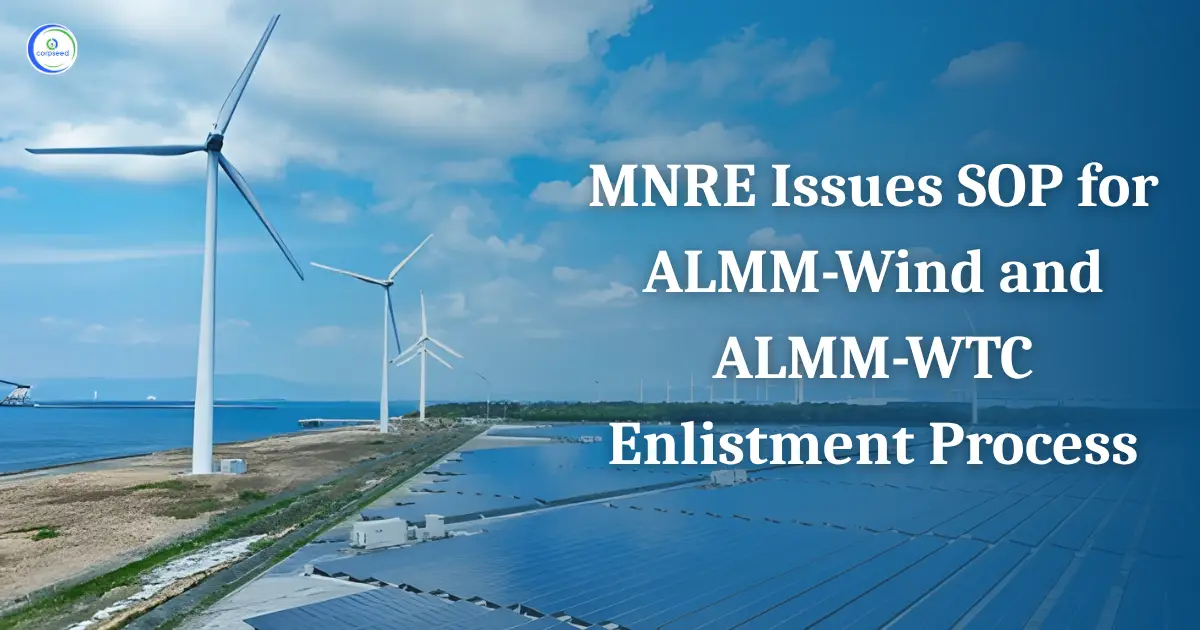



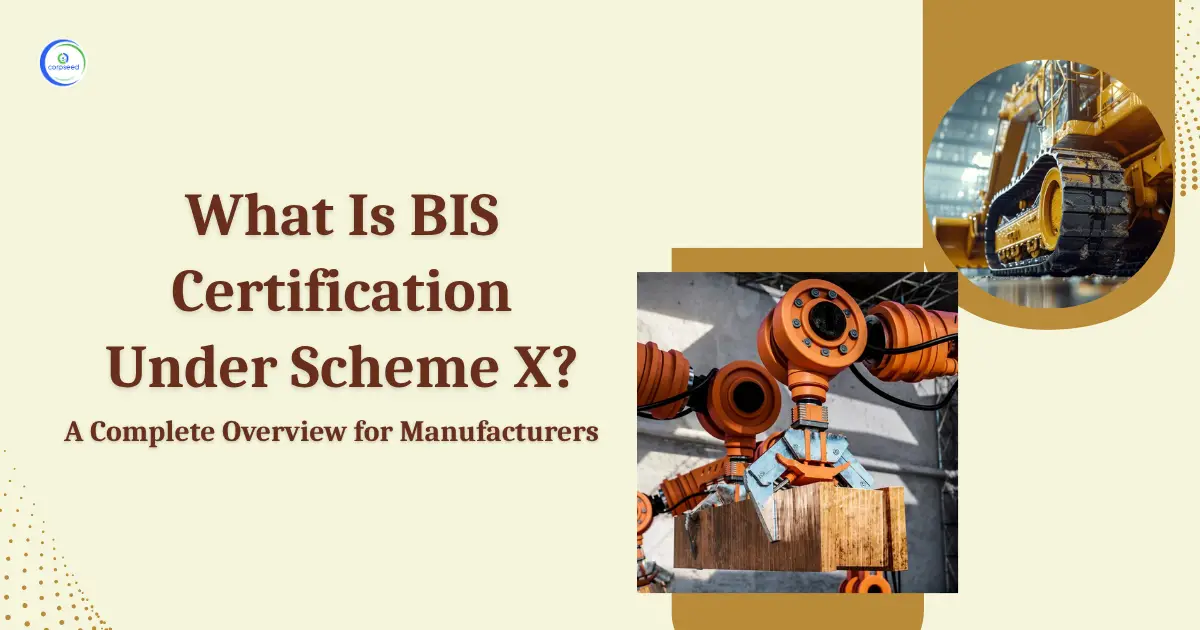
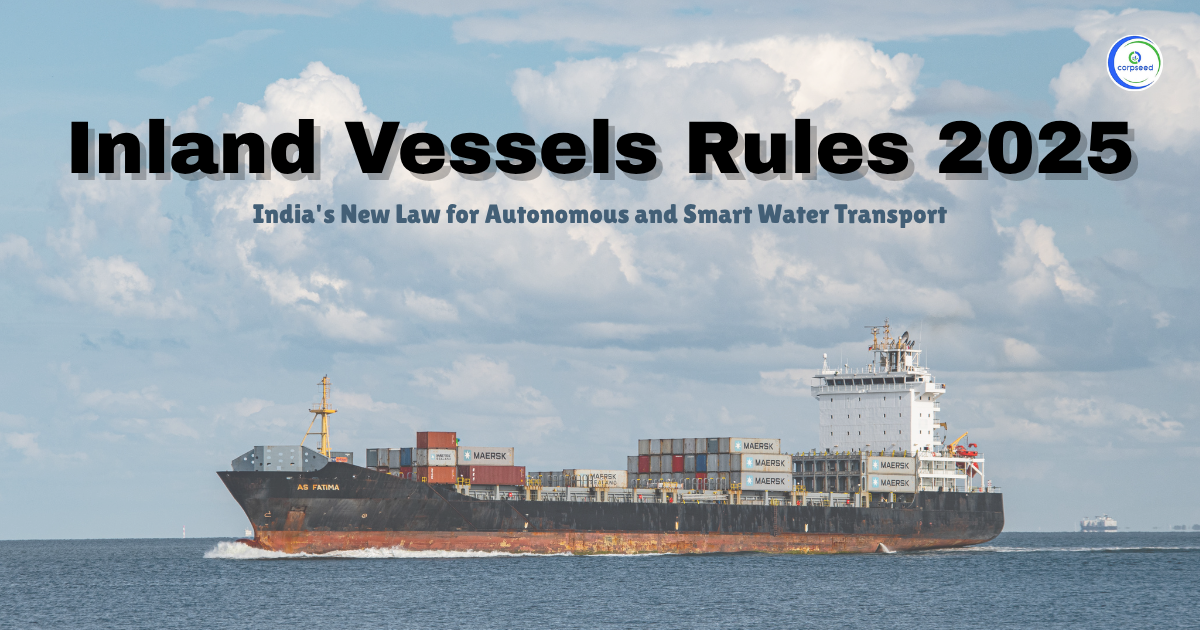
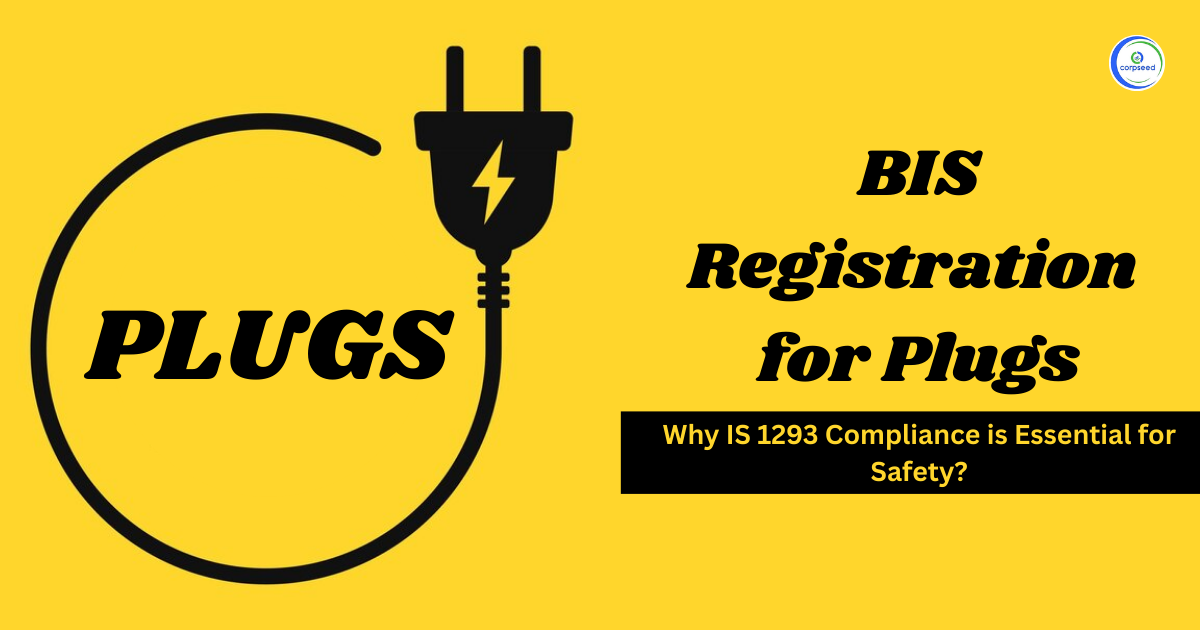
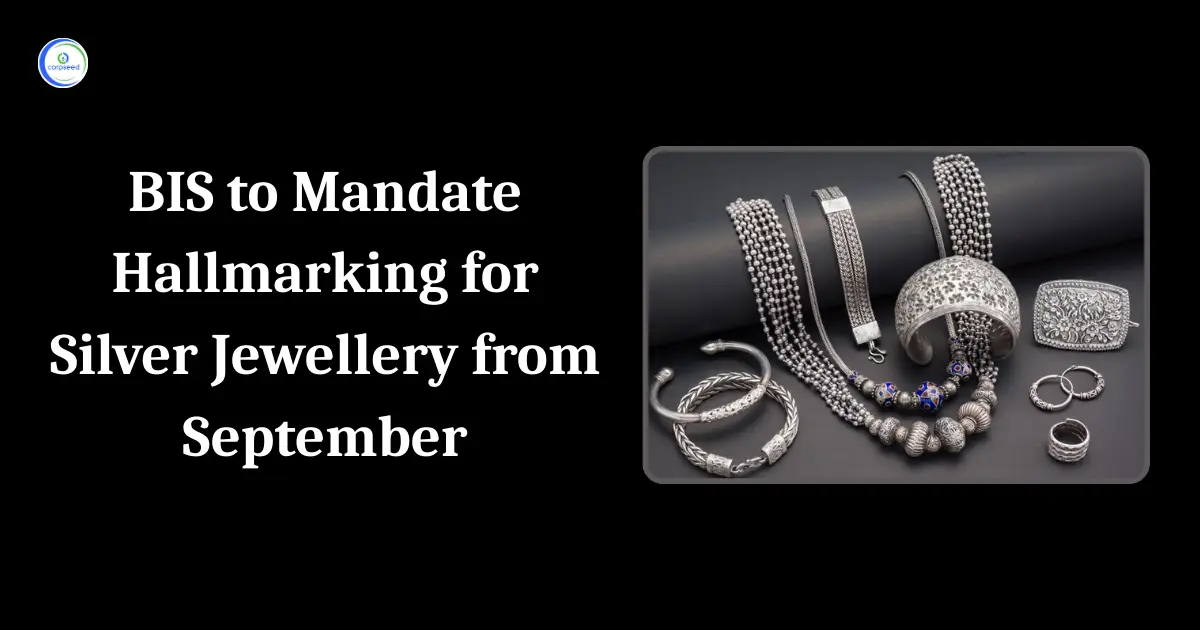
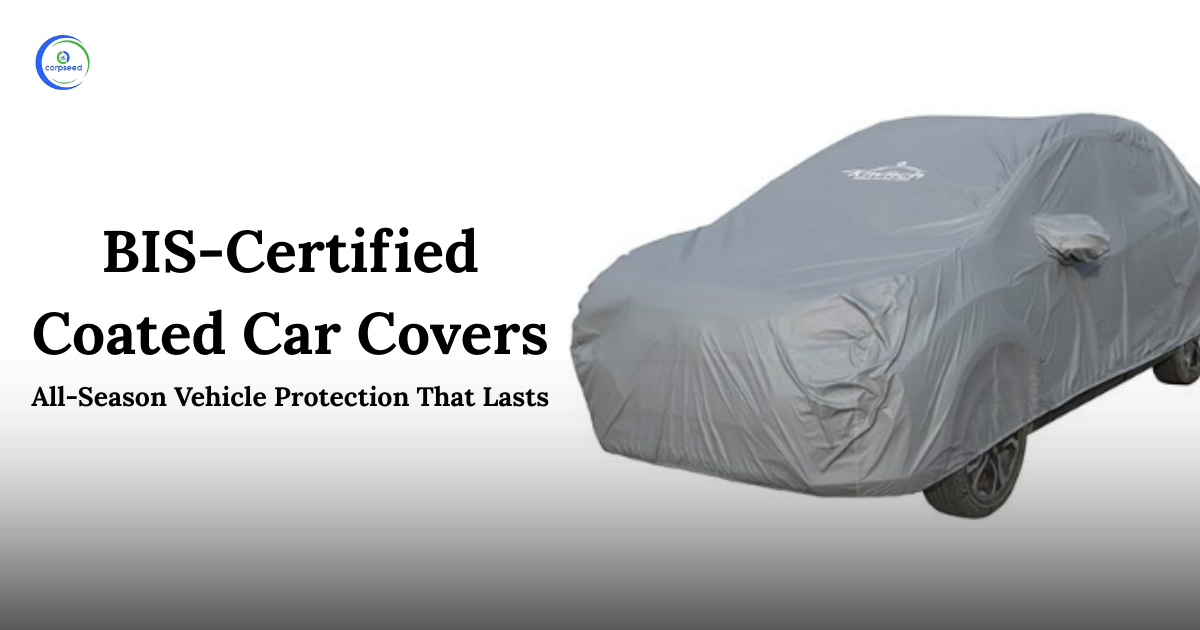
_CORPSEED.webp)